December 16 - 22, 2012: Issue 89
'Billabong' and 'Ocean House', Ocean Street, North Narrabeen
There ahead was the open gate
of the harbour, the low Heads with the South Lighthouse, and the Pacific beyond,
breaking white. On the left was Manly, where Harriet had lost her yellow scarf.
And then the tram going to Narrabeen, where they had first seen
Jaz. Behind was the great lobed harbour, so blue, and Sydney rather
inconspicuous on the south hills, with its one or two sky-scrapers. And already,
the blue water all round, and a thing of the past.
Chapter 18.
Adieu Australia. Kangaroo, by D. H. Lawrence. 1923.
From;
http://ebooks.adelaide.edu.au/l/lawrence/dh/l41k/chapter18.html
THE HOUSE AT
THE END OF THE ROAD
By Robert Whitelaw
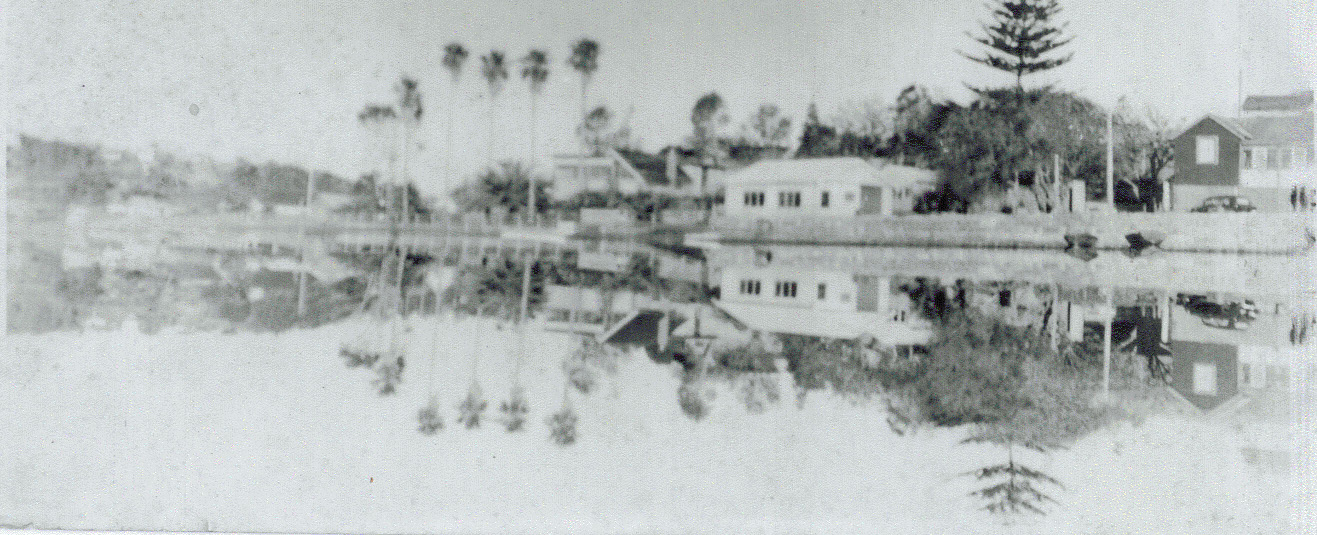
ON SATURDAY, 2 July 2011, I helped an intrepid group of visiting academics - who were visiting Sydney to attend the 12th International DH Lawrence conference - retrace the ferry-and-tram excursion DHL and Frieda made to Manly and North Narrabeen the day after their arrival in Sydney on May 27, 1922. In the course of my tourist-guide narrative, I described the large holiday home (now sadly demolished) at the end of Lagoon Street, North Narrabeen, owned by Mrs Emma Schultz, and how it fitted the description of "the end house" in Kangaroo, and how, in 1909-1910 - some 12 years before DHL and Frieda arrived - the house had been the base for the first manned, heavier-than-air flights in Australia.
I pointed out that there were interesting links between the building industry and the military personalities who took part in those 1909-1910 flights; their continuing friendships into the 1920s and beyond; and the political and returned-servicemen milieu Lawrence describes in Kangaroo. One visitor asked where this research had been published, saying it could have wider literary implications in discussions of DHL's craft - in particular, his creative use of real events and real people. I replied, rather awkwardly, that the research had been a curiosity-driven exercise on my part, with no particular thought of academic publication. This article, however, is an effort to put in print for a wider audience the story of Emma Schultz's end-of-the-road house at Narrabeen.
Emma Schultz (1875-1951) was the wealthy wife of a prosperous and well-connected North Sydney Master Builder, Charles Schultz (1872-1945), who, though born in Queensland, was of Prussian parentage. He regularly undertook public and private building projects for some of the leading architects of the day. The Schultz family had a large house in Burns Bay Road, Lane Cove, and Charles himself was a Justice of the Peace (when such things had particular community recognition), while the Schultz children were sent to elite private schools in Sydney.
In 1905 Emma purchased seven large sections of land on the then isolated northern end of the North Narrabeen peninsula, including a waterfrontage on to the lagoon and overlooking the sand dunes and nearby ocean (the holding comprised the suburban block bordered today by Lagoon, Ocean and Malcolm streets). To gain an idea of the size of the purchase, some 19 modern houses, apartments, and shops have been built on the original block. Today the block appears as a singularly unattractive jumble of utilitarian apartments and flashier housing situated on ill-shaped, battle-axe sites. But in 1905 (and still in 1922 when DHL and Frieda walked there) it was an ideal, unspoilt holiday and weekend retreat for a growing family and the Schultz's wide circle of friends in the building and military/aviation sectors. The original location of Emma's house can still be readily identified today by the stand of high palms along the lagoon edge (originally planted at the front of the house) and by a single, high, pine tree at the back of the house.
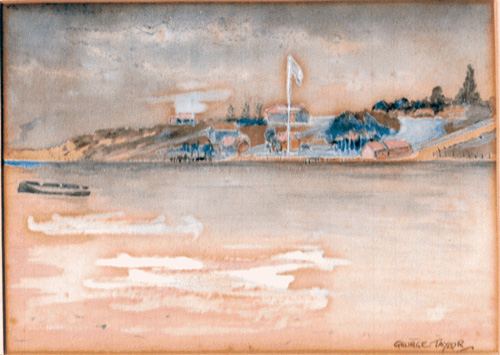
Watercolour of "Billabong" painted by George Augustine Taylor in the 1920s
On this land, Charles Schultz built his wife a large, two-storey
holiday house across a sloping site on the Lagoon Street side of the block. A
recent interview with a Schultz grandson confirmed that visitors normally
accessed the house through a Malcolm Street walkway directly to the second
floor, and then into a purpose-designed reception area that had adjoining
bedrooms intended for weekend holiday use (see drawing). The Schultz family and
their wealthy friends would have had motor cars, and these would have been
parked outside the upper Malcolm/Ocean Street level for ease of
entry.
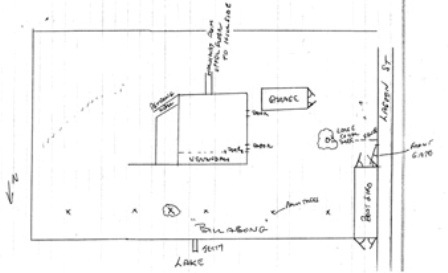 Below; A plan of the
"Billabong" property drawn from memory by Charles Schultz's grandson,
Michael
Below; A plan of the
"Billabong" property drawn from memory by Charles Schultz's grandson,
Michael
At the time, the two-storey Schultz house (called "Billabong" by the family) was a stark contrast to the weatherboard "shacks" built further down the street. It was constructed in a distinctive architectural style. Charles had experimented with what would today be called Besser-brick fabrication, and at ground level the house featured a patterned-stone facade with blocks made of sand collected from the nearby dunes. The upper floor was of a more-standard timber-and-plaster construction.
Yet, with a squint of the eye, one can see how it might have reminded DHL of the Cornish stone-and-timber buildings in St Columb, Cornwall. (In Kangaroo, Lawrence says that on seeing "the end house", Somers' heart flew to Cornwall and the village of St Columb Major. He called "the end house" St Columb in the novel.) Hitherto, Emma's house at-the-end-of-the-road has been overlooked by literary historians, possibly because, as a now-demolished holiday house on the then outer extremity of Sydney, it did not attract the interest of even the most determined and diligent of researchers.
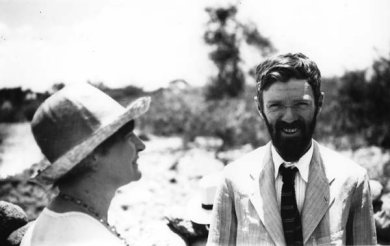 Moreover,
until recently it had been by no means certain if DHL and Frieda had travelled
to far-off North Narrabeen the day after their arrival for any purpose other
than perhaps looking for cheap transit accommodation. It could well have been
that the "end house" in chapter ii was simply another Lawrentian literary
invention.
Moreover,
until recently it had been by no means certain if DHL and Frieda had travelled
to far-off North Narrabeen the day after their arrival for any purpose other
than perhaps looking for cheap transit accommodation. It could well have been
that the "end house" in chapter ii was simply another Lawrentian literary
invention.
The research breakthrough came in 2010 with a fresh effort to see what might have induced DHL and Frieda to take a long tram trip to North Narrabeen and then trudge nearly a mile along a sandy road to the tip of the Narrabeen peninsula. This fresh effort was encouraged by the growing body of work by local historians on the activities of right-wing para-military organisations in 1920s Sydney - groups such as the King and Empire Alliance, the Old Guard, and later the New Guard (Lawrence readers will be recall that this is the milieu "fictionalised" by DHL in Kangaroo).
More recent research by Robert Darroch, Dr Andrew Moore and John Ruffels pointed to the activities of some key figures in this milieu - people such as such as George Augustine Taylor, Florence Taylor, and Charles Rosenthal - in flying experiments in 1909-1910 at North Narrabeen. Some cross-disciplinary trawling last year turned up a privately-published monograph by former President of the Royal Society NSW and aviation historian, David Craddock. This 1999 paper, entitled Feeling the Air, described in considerable detail (with photographs) the building of Taylor's first gliders, partly constructed for military purposes, and the subsequent careers of several of the key the participants.
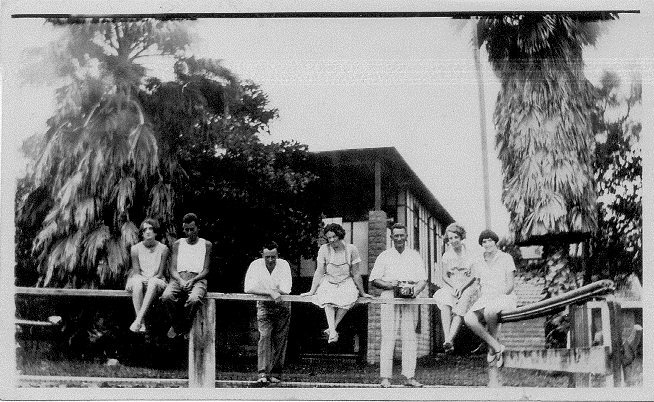 Importantly, Emma's house overlooking the lagoon was identified as
the place on the peninsula were participants stayed and socialised over periods
of weeks during the experimental flights, with temporary sheds on the block
being used as hangars for the gliders. Apart from the social friendship between
the Taylors, Rosenthal and Schultzes, the three were also connected
professionally. They were all leading members of the close-knit (almost Masonic)
Sydney architectural and building community. (It is worthy of note that, some 50
years later, Florence Taylor had a paragraph especially inserted in her
husband's biography Some Chapters in the Life of George Augustine Taylor to
recall the help and friendship of the Schultz family.) As his statue in the
nearby Narrabeen shopping centre proclaims, George Taylor was in December 1909
the first man to fly in Australia in a heavier-than-air aircraft from the dunes
at North Narrabeen Beach.
Importantly, Emma's house overlooking the lagoon was identified as
the place on the peninsula were participants stayed and socialised over periods
of weeks during the experimental flights, with temporary sheds on the block
being used as hangars for the gliders. Apart from the social friendship between
the Taylors, Rosenthal and Schultzes, the three were also connected
professionally. They were all leading members of the close-knit (almost Masonic)
Sydney architectural and building community. (It is worthy of note that, some 50
years later, Florence Taylor had a paragraph especially inserted in her
husband's biography Some Chapters in the Life of George Augustine Taylor to
recall the help and friendship of the Schultz family.) As his statue in the
nearby Narrabeen shopping centre proclaims, George Taylor was in December 1909
the first man to fly in Australia in a heavier-than-air aircraft from the dunes
at North Narrabeen Beach.
The same day, his formidable wife Florence tucked her frock into her boots and became first woman to fly. An hour later, Emma Schultz took to the air and became the second woman to fly in Australia. Later the same afternoon, a young carpentry apprentice (later Sir) Edward Hallstrom, who had helped build the gliders, also took to the air. Local history stories of the North Narrabeen Surf Club and of growing up on the peninsula in the 1920s confirmed the social standing of the Schultz and the prominence of Emma's at-the-end-of-the-road house. Interviews with helpful Schultz and Taylor descendants provided further details of the house, its interior, and some useful sketches and contemporary snapshots.
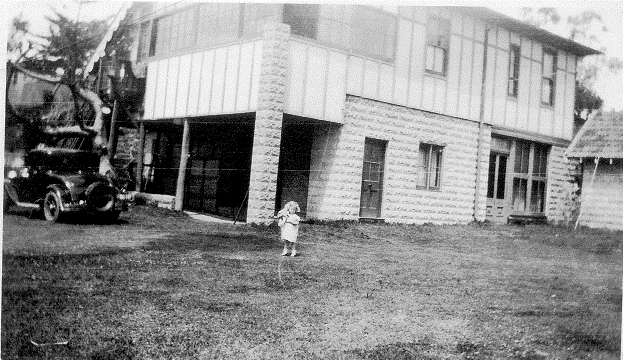 Interestingly,
the Lagoon location, curious building construction, female ownership, and
vehicle parking arrangements of Emma's house uncannily fit the northern end of
the Narrabeen peninsula described "fictionally" in Kangaroo. Lawrence's "end
house" in the novel appears to have been a real place, with real people engaged
in ongoing and meaningful professional and social contact.
Interestingly,
the Lagoon location, curious building construction, female ownership, and
vehicle parking arrangements of Emma's house uncannily fit the northern end of
the Narrabeen peninsula described "fictionally" in Kangaroo. Lawrence's "end
house" in the novel appears to have been a real place, with real people engaged
in ongoing and meaningful professional and social contact.
Aviation aside, by 1922 the Taylors were actively involved in many aspects of Sydney life, editing a bevy of architecture and building industry journals, warring with the Burley Griffins, and engaged in numerous political and returned servicemen causes. George was the editor/publisher of a magazine for an ex-servicemen organisation headed by Sir Charles Rosenthal. Before that he had also worked for the Bulletin in Sydney and for Punch in England, and had been a prominent member of Bohemian Sydney in the 1890s. The Taylors in the 1920s were at the very centre of Sydney's vibrant journalism and publishing world.
When Lawrence arrived in Sydney, Charles Rosenthal was no longer a rising artillery officer, a military colleague of George Taylor, and a failed Army aviator (he had crashed an aircraft on a flight to Parramatta - a perilous journey given his considerable bulk). By 1922 he had become a bemedalled war hero, a knighted Major-General, a member of Parliament, a future President of the Australian Institute of Architects, and - most significantly - the current President of the patriotic, right-wing, anti-Catholic King and Empire Alliance (whose launching in Sydney in 1921 had been attended by his building industry colleague and fellow aviator, George Taylor).
However, in late May 1922 George and Florence Taylor were no longer in Sydney. They had embarked on a sea voyage to Europe, leaving a temporary gap in the local world of working journalism.
DHL and Frieda arrived in Sydney - two weeks after the Taylors'
departure - carrying Letters of Introduction and, perhaps, hopes of some
remuneration to help defray their local costs while they waited for money from
overseas for the next stage of their journey to America. (One of the Letters of
Introduction, which we know Lawrence did not present, was addressed to a member
of the staff of the Bulletin.) Thus the question has been raised why, on that
memorable Sunday afternoon in May 1922, did DHL and Frieda travel so many miles
out of their way to remote North Narrabeen, then trudge along that sandy road,
to precisely where Emma Schultz's house stood. Was it merely a sight-seeing
excursion? Instead, is it not more likely that DHL's Letters of Introduction
were taking him to a Sydney contact who, it turned out, also happened to know
that the Taylors had just departed, and that one of the organisations for which
the Taylors wrote might be in need of temporary editorial assistance?
(In
Kangaroo, Cooley asks Somers if he is going to write something for their Diggers
organisation.)
Could DHL and Frieda have been invited by that contact to come that Sunday for afternoon tea to Emma's house to meet some of the old glider group and King and Empire Alliance personalities, who were otherwise up there for a social weekend? Was Charles Rosenthal there that weekend, and did DHL, having observed his remarkable physical figure and compelling personality, creatively seize on the opportunity to conjure up the central figure in Kangaroo? Real places, real people enhanced by genius?
Is it also possible that, on the same Sunday afternoon at Emma Schultz's house, amid the social chat, one of the prominent Friend family (who were leading building industry suppliers within the Taylor/Rosenthal circle) became aware that DHL and Frieda were looking for temporary, writer-friendly accommodation, and recommended a newly-vacant cottage across the road from a family member's own holiday cottage in Craig Street, Thirroul? The story of "Wyewurk" and its architect Roy Irons is, however, a tale for another day.
Suffice that a good day was recently had by our DHL Society of
North America cousins…
…photographing the Tea Room building on the Corso
probably visited by DHL and Frieda; crossing over the road and dipping toes into
the surf at Manly ocean beach; viewing the spectacular panorama of Sydney from
North Head; motoring serenely along Ocean Street where DHL and Frieda trudged
all that way on their first full day in Sydney; standing on the sand dunes where
Florence Taylor and Emma Schultz became the first women to fly in Australia;
and, finally, ending up at Taronga Park, where the young apprentice Edward
Hallstrom later used his manufacturing fortune to develop a renowned Zoo on the
leafy Harbour's edge.
Robert Whitelaw, now retired, is a History Honours graduate from Sydney University in the 1960s. His research skills were further honed by several decades as a policy officer with the Australian Government. Photographs: courtesy of Michael Schultz, grandson of Charles and Emma Schultz
Copyright Robert Whitelaw, 2012. Article reproduced with kind permission of Rananim, the Journal of the DH Lawrence Society of Australia, at www.dhlawrencesocietyaustralia.com.au
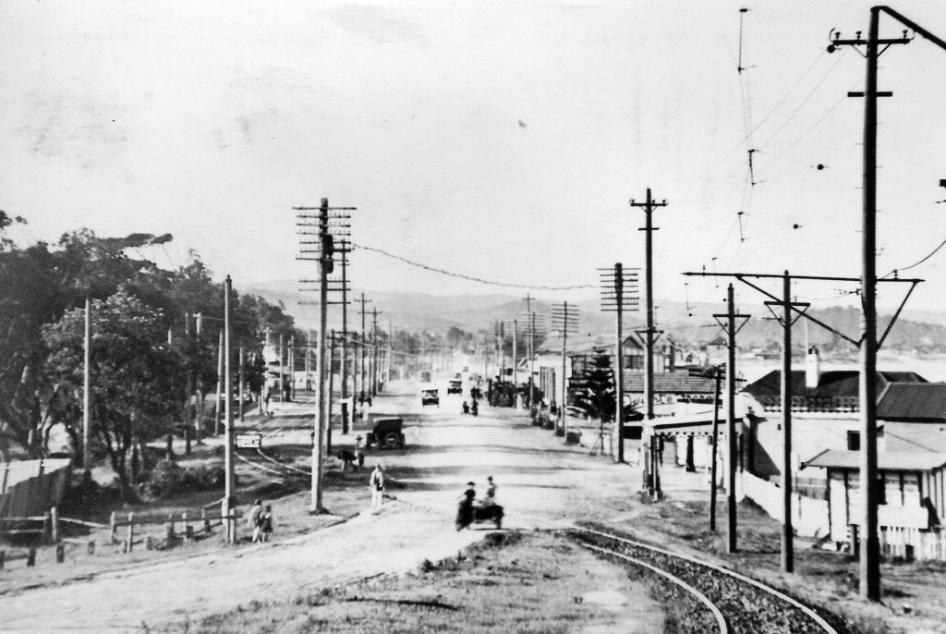
A mile south of Narrabeen Tram Terminus, 1925.
Extras:
The Schultz estate occupied the whole block bounded by the lagoon, Ocean, Malcolm and Lagoon streets (its actual address-frontage), . On the Ocean street corner was “Tres Bon”, possibly owned by Emma’s sister Jessie (born 1880) and mentioned by D H Lawrence in Kangaroo. The house, a two storey premises, was the largest around at that time. Michael, grandson of Emma and Charles Schultz, described the house as having a large lounge-room with smaller rooms (6) and verandahs off it built as a weekender – that others flocked to. At the rear of the property there was another structure that could have been an extra cottage, and later there was a separate flat attached to the main house. Michael Schultz also had a photograph of Rosenthal and Taylor in the grounds of Billabong (with a Major McLeod) which dates from before WWI. The Schultzes were great friends with George Augustine and Florence Taylor, who made the first ever flights by Australian men and women on the land of this couple in 1909. Emma Schultz being the second Australian woman to fly.
GLIDING AT NARRABEEN. SENSATIONAL
INCIDENTS. AN AUSTRALIAN-BUILT MACHINE. On Sunday last Mr. George Taylor,
secretary of the Aerial League, took a biplane,18ft long, with 4ft planes, and
box-kite tail balance, to Narrabeen. The trials at gliding were held, Mr. Taylor
himself acting as demonstrator. The scene of the flights was at Narrabeen Heads,
in the presence of about one hundred visitors, the wide stretch of sand
rendering any possible fall a matter of some safety. At the beginning of the
experiments the wind came from the south-east at 10 miles an hour. The machine
was carried to a sand knoll, and brought face on to the wind. Messrs. Schultz,
Le Clere, and Gibbons, of Narrabeen, required all their strength to hold it
down. For the preliminary flights the corners were held by guide ropes 15ft in
length to prevent the machine from gettingout of control before the experimentor
was properly tuned to automatic balancing.
At the signal to let go the
machine was well lifted by the wind, and by careful manipulation on the part of
Mr. Taylor it shot towards the ocean 98 yards away in a series of curves from
3ft to 15ft above the ground, dragging its guides, who, however, pulled it to
the ground at the water's edge. Twenty-nine successful flights were made by Mr.
Taylor and Mr. Hallstrom, an enthusiastic member of the Aerial League. As the
afternoon wore on the flights improved on account of the wind freshening to15
miles an hour, and coming directly from the east so much so that the last flight
of the day was notable.
At "let go" the wind immediately lifted the machine to the full length of the guide ropes, and dragged the operators so fast to the ocean that two let go; the machine now soared to-wards the ocean, and at the water's edge the remaining guide ropes were loosened, the machine making a leap upwards. Mr. Taylor by careful manoeuvring, kept the machine well under control, and dived it in the sea some little distance from the heads. The machine will be fitted with steering gear and other improvements for further flights. Mr. Taylor's monoplane is now having its powerful engine fitted to it at Gibson and Son’s motor works at Balmain, and he hopes to have it in the air during Christmas week. If the flights are as successful as anticipated the machine will be placed at the disposal of the military authorities during the Kitchener camp and review. GLIDING AT NARRABEEN. (1909, December 7). The Sydney Morning Herald (NSW : 1842 - 1954), p. 3. Retrieved from http://nla.gov.au/nla.news-article15096414
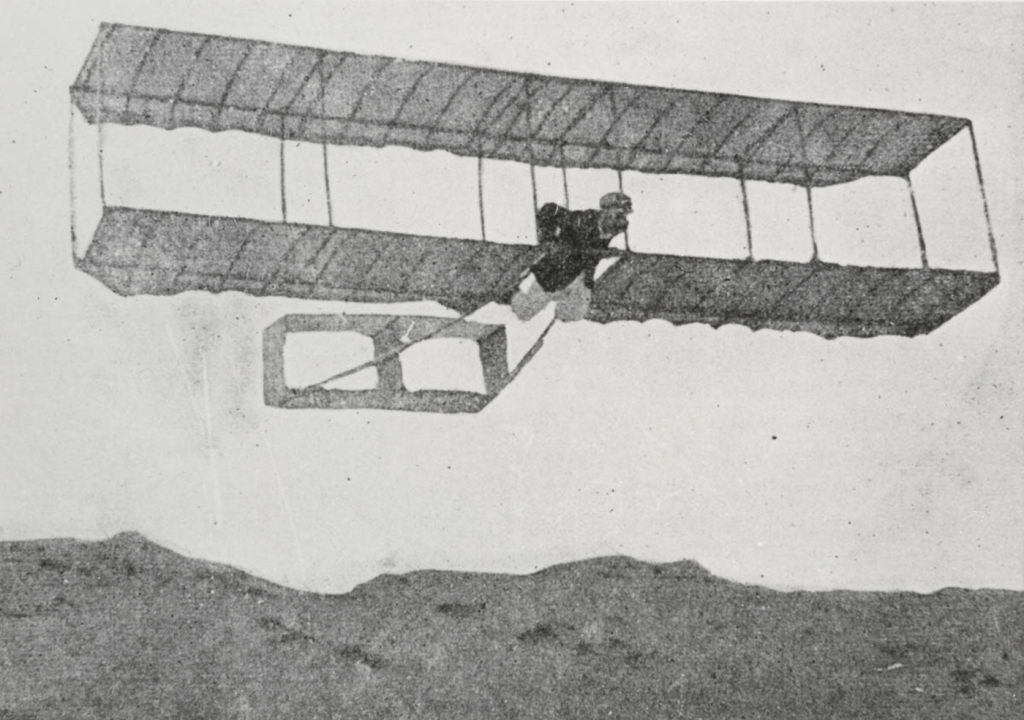
George Taylor at Narrabeen. Picture no a 1383001h, courtesy State Library of NSW
George Augustine
Taylor was born in Sydney on 1 August 1872. He was a craftsman and
journalist and during the course of his life had a number of interests including
radio, telephony, martial technology, town planning and labour saving devices in
the home. He trained as a builder, worked as a cartoonist in the 1890s and
manufactured 'bagasse', a cement-plaster around 1900. Taylor also became
interested in town planning and helped to found the Institute of Local
Government Engineers of Australasia.
George's study of Aeronautics began by
him making models of aeroplanes. On 28 April 1909 he called a meeting of
like-minded people to discuss the future of aeronautics and was chaired by
Lawrence Hargrave. George proposed the formation of the Aerial League of
Australia. George Taylor's glider was similar to one designed, built and flown
at Neuville sur Saone (Rhone) in France by the Voisin Brothers. That glider had
been built in 1899 and featured flat, main wings and a Hargrave box kite tail.
The wingspan appeared much shorter than Taylor's 1909 glider. Despite the flurry
of activity of importing foreign machines Taylor wanted to see a locally produced aeroplane in
the Australian air first.
It is also of note that the first man to fly in a heavier than air craft today would not be permitted, for medical reasons, to obtain a pilot's licence. Taylor suffered from Epilepsy. Taylor went on to found the Wireless Institute of New South Wales in 1910, was in the Intelligence Section General Staff in World War I, began publishing "Soldier" in 1916, helped found the Institution of Engineers, Australia in 1919, the Australian Inventions Encouragement Board in 1922 and the Association for Developing Wireless in Australia in 1923. He worked on proto-television, achieving colour transmission in mid 1920s. In 1925 he stopped publication of the "Soldier" magazine and began publication of 'Australian Home". He was also partly responsible for the 1927 Federal royal commission into wireless. Tragically George Taylor died prematurely when he slipped in the bath, struck his head and drowned on 20 February 1928. Florence and George had no children. George Taylor rented premises at 6-8 Brumby Street, Surry Hills which became the first aeroplane factory in Australia and probably the southern hemisphere. At least one glider and one monoplane were built in the Brumby Street factory. "The Sydney Morning Herald" of 2 October 1909 said that the factory was besieged by inventors and eight war kites were apparently under construction. The glider flown by Taylor at Narrabeen was as simple biplane with a box-kit tail made in the factory. Read more: http://www.powerhousemuseum.com/collection/database/?irn=11574#ixzz2F3gCxlfA Under Creative Commons License: Attribution Non-Commercial
OBITUARY. MR. G. A. TAYLOR. The funeral of the late Mr. George Taylor took place on Saturday. A service was conducted at Wood Coffill's mortuary, and after-wards a brief service was held at the Crematorium Chapel, at Rookwood. The mourners included Mrs. Taylor (widow),Mrs. Barney Logue (sister), Messrs. F. A.March, L. C. Yanz, B. Chantrell (brothers-in-law), Mrs. L. Owen (sister-in-law), Messrs.J. and F. Yanz (nephews). There were alsopresent Sir Joseph Cook, Sir Charles Rosen-thal, Sir John Sulman, Sir Allan Taylor,Messrs. Fred. Davison (representing Re-returned Sailors and Soldiers' Imperial League),…. C. Schulz (North Narrabeen Life-Saving Club), OBITUARY. (1928, January 23). The Sydney Morning Herald(NSW : 1842 - 1954), p. 9. Retrieved from http://nla.gov.au/nla.news-article16436080
Florence:
"All these buildings were photographed for Mrs Florence Taylor,
editor of 'Building' and owner of Building Publishing Co, Loftus Street,
Sydney. She and husband, engineer George Taylor, together with Ted Hallstrom
and Charles Schultz, flew first heavier-than-aircraft at Narrabeen. She was also
the first woman architect in Australia." (Ted Hood, 30/3/1988) State
Library of NSW records
TAYLOR.-The Cortege of the Funeral of Mrs. AMY FLORENCE TAYLOR will depart from Ernest Andrews's Parlours. 55 Australia-street, Newtown. THIS DAY, at 2.10 p.m.. for the Church of England Cemetery. Rookwood. ERNEST ANDREWS and CO., Motor Funeral Directors, B5 Australia-street, Newtown. Family Notices. (1931, July 31). The Sydney Morning Herald(NSW : 1842 - 1954), p. 7. Retrieved from http://nla.gov.au/nla.news-article16797139
Emma and Charles were married 1894. Charles was a builder involved in many large projects in Sydney and rural NSW. Their main residence was ‘Warraba’ at 72 Burns Bay Road, Lane Cove, a residence so substantial it is now used as 'Mandalay’ a wedding reception business. He also had the Narrabeen Concrete Blocks company, into which the Narrabeen dunes on this property may have disappeared;
NARRABEEN CONCRETE BLOCK CO., Lagoon-street, Narrabeen or C. SCHULTZ, Rhodes-avenue, Tél., 652 N.8._North Sydney. Advertising. (1913, July 26). The Sydney Morning Herald (NSW : 1842 - 1954), p. 21. Retrieved from http://nla.gov.au/nla.news-article15438448
They entertained on a grand scale at Narrabeen with reports of up to 40 guests staying on weekends. Billabong, with six bedrooms, would have accommodated some of these while the rest may have been placed in Ocean House, Ocean Street, Narrabeen, a 20 room Boarding House also built and owned by Mr Schultz.
NARRABEEN.-Furnished COTTAGE. 6 rooms, linen, cutlery, lake frontage. C. SCHULTZ, Rhodes avenue, N. Sydney. Tel.. 652 N. B. Advertising. (1911, October 7). The Sydney Morning Herald(NSW : 1842 - 1954), p. 20. Retrieved from http://nla.gov.au/nla.news-article28139750
NARRABEEN - BOARDING HOUSE to LET, Furnished, in Ocean-street, known as OCEAN HOUSE, most prominent position in Narrabeen, overlooking ocean and lake, large grounds. C. SCHULTZ, Rhodes-avenue, Tel.. 052 N. S._North Sydney. Advertising. (1913, July 16). The Sydney Morning Herald (NSW : 1842 - 1954), p. 3. Retrieved from http://nla.gov.au/nla.news-article15435908
BOARDING-HOUSE, known as Ocean House, Narrabeen, situated in the most popular place in Narrabeen. At entrance to Lake and Ocean Beach. Large grounds, Rent 35/ per week. Apply FOWLER'S STORE, Ocean-street. Narrabeen, or North 1975. Advertising. (1920, July 3). The Sydney Morning Herald (NSW : 1842 - 1954), p. 17. Retrieved from http://nla.gov.au/nla.news-article15896384
FIRE AT NARRABEEN. OCEAN HOUSE DESTROYED. Ocean House, a two-story boarding house In Ocean-street, Narrabeen, a two storied boarding house containing 20 rooms, was totally destroyed by fire early this morning. The outbreak was discovered shortly after 3 o'clock, and fire brigades from Narrabeen, Deewhy, Harbord, and Manly, in charge of Station-Officer Butcher, proceeded to the scene, The flames had such a strong hold on the building upon their arrival, however that the firemen were powerless to prevent Its destruction. The building was the property of Mr. Frank Rochester, of Civic-parade, Dee Why, who estimates his loss at about £2600. The cause of the outbreak is unknown. There was no one In the boarding-house when the fire broke out. Mr. Robert David-son, the caretaker, who was residing temporarily in a small cottage at the rear of the boarding-house, awoke shortly after 1am to find the main building was ablaze. FIRE AT NARRABEEN. (1929, March 27). The Sydney Morning Herald (NSW : 1842 - 1954), p. 16. Retrieved from http://nla.gov.au/nla.news-article16541481
Mr Schultz was a supporter and member of the North Narrabeen Surf Life Saving club:
NEAR AND FAR." At Narrabeen last Saturday, at a concert In the grounds of Mr. Charles Schultz's, week-end home, 500 people were afforded an opportunity of hearing music "culled from the air." It had been transmitted from Mr. Basil Booths wireless station at Clifton Gardens, and received on Mr. Leonard Schutlz's four-valve receiving apparatus. The concert bad been arranged by the Narrabeen Surf and Life Saving Club to augment its funds, and as a result of the efforts about … was added to their funds. The Black Cat Concert Company contributed the second half of the programme, the artists being Norman Honce, 15. Cope, P.AA'alsh, L. Bancroft, M, Bancroft, G. Hynard, J. and A. Roebuck. NEAR AND FAR. (1923, April 3). The Sydney Morning Herald(NSW : 1842 - 1954), p. 4. Retrieved from http://nla.gov.au/nla.news-article16053743
His son Leonard (1906-1980) was a pioneer among radio in Australia, went on to be senior vice-president of the Radio Engineers association, chief engineer at 2GB and set a record in 1953 for gliding;
Glider's Record"Goal" Flight. The chief engineer of radiostation 2GB, Mr. L. N.Schultz, set an Australian record yesterday for a "goal" flight in a glider. He' flew from Narromine to Wagga, about 210 miles, in five and a half hours, at heights varying between 7,000and 10,000 feet. A "goal" flight is one in which the landing point is nominated before take-off. Glider's Record "Goal" Flight. (1953, December 31). The Sydney Morning Herald (NSW : 1842 - 1954), p. 5. Retrieved from http://nla.gov.au/nla.news-article18402977
SYDNEY EXPERIMENTER IN LONDON. Mr. Leonard Schultz, the son of Mr. and Mrs. Charles Schultz, of Warraba, Lane Cove, who has distinguished himself In Sydney as a wireless experimenter, has arrived in London by the Aquitania from Now York. His parents have received word of his successful tour through America, where he has investigated wireless development. He intends touring Europe before returning to Australia. WIRELESS. (1927, February 28). The Sydney Morning Herald(NSW : 1842 - 1954), p. 6. Retrieved from http://nla.gov.au/nla.news-article16357918
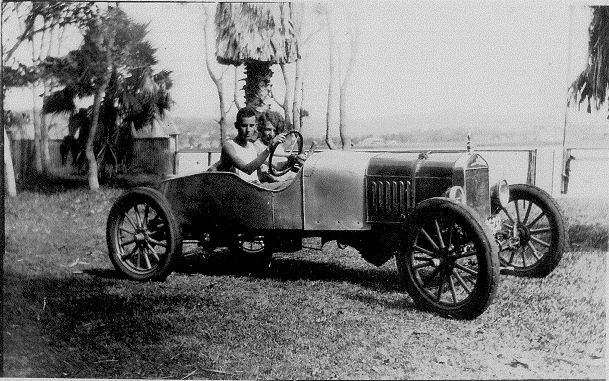 The lady he is pictured with at Billabong in 1928 was his
first wife
The lady he is pictured with at Billabong in 1928 was his
first wife
MOTOR FUNERALS. LIMITED, Tole.. M8277. 30 City-road. city. SCHULTZ_The Relatives and Friends of Mr. LEONARD SCHULTZ, of 72 Burns Bay-road. Lane Cove; Mrs. SIMPSON, of Isis-street Wahroonga, are Invited to attend the Funeral of his beloved WIFE and her DAUGHTER. Agnes Linter (Lalla) Schultz; to leave St. Andrew's Church of England, Lane Cove, THIS DAY. at 10.30 a.m.. after service commencing at 10 a.m., for Church of England Cemetery, Northern Suburbs, per motor service. T. J. ANDREWS. Funeral Director. 'Phones, L2873. 94-96 Walker-street. X3033. North Sydney. Family Notices. (1931, July 31). The Sydney Morning Herald(NSW : 1842 - 1954), p. 7. Retrieved from http://nla.gov.au/nla.news-article16797139
WEDDING For her marriage
yesterday to Mr. Leonard Schultz, Miss Margaret Pearson chose a classically cut
gown of magnolia satin, with a long train, and a veil of tulle caught into a
coronet of orange blossom. She carried a bouquet of pink water lilies and cream
stock. The bride is the eldest daughter of Mr. and Mrs. Christopher Pearson, of
Waitara, and the bridegroom, the youngest son of Mr. and Mrs. Charles Schultz,
of Lane Cove. Family Notices. (1934, November 2). The Sydney
Morning Herald (NSW : 1842 - 1954), p. 4. Retrieved from http://nla.gov.au/nla.news-article17131974
Also Visit: Pittwater Regatta Air Race Trophies: From 1934 And 1935 And The Pilot Who Saved William Hughes
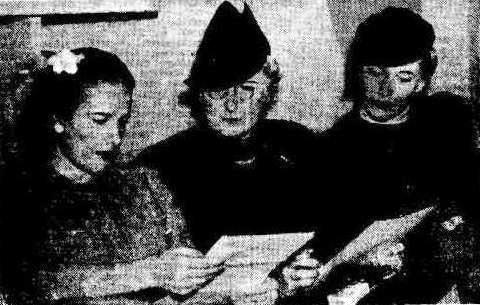 DISCUSSING BALL PLANS. PICTURE MRS. CHARLES WALTON, MRS. H. D.
ARNOTT, who was elected president, and MRS. LEN SCHULTZ, at the meeting of women
members of the Royal Aero Club of New South Wales, which was held at the
Australia Hotel yester-day afternoon to form a ball committee for the annual
Aero Club Ball, which will be held at the Trocadero on May 16. DISCUSSING
BALL PLANS. (1940, April 24). The Sydney Morning Herald (NSW : 1842 -
1954), p. 5. Retrieved December 15, 2012, from http://nla.gov.au/nla.news-article17646804
DISCUSSING BALL PLANS. PICTURE MRS. CHARLES WALTON, MRS. H. D.
ARNOTT, who was elected president, and MRS. LEN SCHULTZ, at the meeting of women
members of the Royal Aero Club of New South Wales, which was held at the
Australia Hotel yester-day afternoon to form a ball committee for the annual
Aero Club Ball, which will be held at the Trocadero on May 16. DISCUSSING
BALL PLANS. (1940, April 24). The Sydney Morning Herald (NSW : 1842 -
1954), p. 5. Retrieved December 15, 2012, from http://nla.gov.au/nla.news-article17646804
Warringah
Shire Council minutes records;
1. Chas Schultz.
38/13,127. (1) drawing attention to the condition of Lagoon Street fronting his
property and entrance way, and (2) requesting that attention be given to the
road from Malcolm Street to his entrance in Lagoon r Street Resolved (Crs.
Atkins, Greenwood) - That £1 be voted for-the cleaning out of the watertables
and maintenance repairs a12/12/1927
Chas. Schultz. 7/3/29. Drawing attention
to a-large number of posts recently' erected in Narrabeen Lake,-which are a
danger to boats, and are unsightly. To be informed that those posts are on a
private boundary.' 18/03/1929
Mrs. E Schultz , 15/2/35, advising that Mr. Wylie and
she have made application to the Lands Department for permission to deepen the
lake fronting their properties at Lagoon Street,'Narrabeen, and requesting
Council's support should it be asked by the Department to express an opinion.
Narrabeen lake Dredging Requests - That consideration be deferred until the
whole question of dredging in Narrabeen Lagoon is being dealt with: (Crs.
Ross, Campbell) 05/03/1935
E. Schultz, 9/3/35, requesting that the extreme
northern cr. of Lagoon Street, Narrabeen, be tarred and top-dressed, Bt. and
that the long weeds on either side, into which refuse is dumped, be cleared
away. Resolved, - that the Overseer's recommendation that about eight
lorry-loads of gravel be obtained for blinding the loose gravel at the end of
the road be adopted. (Crs,Rass, Nicholas) 19/03/1935
Chas, Schultz , 18/3/38,.requesting (a) that Lagoon Street from Malcolm Street to his property be reconditioned; (b) that noxious weeds on the footpath, which form a dumping ground for picnickers' refuse, be removed. Resolved, - That the Overseer's report be adopted, and £48 be voted for gravelling and tarring 4 chains of the northern end of Lagoon street, the work to be done when money becomes available, and that noxious weeds on the footway be removed. (Cr: Nicholas, Butcher,) 29/03/1938
Charles died in 1945:
AVIATION PIONEER'S DEATH (1872- 1945)
The death has occurred of
Mr. Charles Schultz, a director of the Master Builders' Insurance Company, who
was well known for his support of aviation in its early stages. From 1909 onward
his week-end home at Narrabeen often had 40guests, who went there for gliding
practice. One of his sons, Mr. Len Schultz, was an honorary aviation
instructor in the recent war. Mr Schultz is
survived by a widow and family. AVIATION PIONEER'S DEATH. (1945,
December 1). The Sydney Morning Herald (NSW : 1842 - 1954), p. 5. Retrieved
from http://nla.gov.au/nla.news-article27921813
Emma passed away six years later:
SCHULTZ. Emma.-January 20, 1951 at private hospital. Newport, beloved wife of the late Charles and loved mother of Doris (Mrs. E. E. Warren). Fred, and Len. Privately cremated. Family Notices. (1951, January 23). The Sydney Morning Herald (NSW : 1842 - 1954), p. 18. Retrieved from http://nla.gov.au/nla.news-article27569489
Of Note:
Guilty' OF RECEIVING. Arthur Bowen Baker was charged with having, on October 16, broken Into the residence of Charles Schultz at Narrabeen, and stolen clothes, blankets, sheets, and other articles. There was a second count of feloniously receiving stolen property. QUARTER SESSIONS. (1920, November 20). The Sydney Morning Herald (NSW : 1842 - 1954), p. 9. Retrieved from http://nla.gov.au/nla.news-article16876173
BUILDINGS AND.WORKS. SPINNING MILLS. Extensive premises for use as spinning mills at Marrickville are to be constructed for the Australian Woollen Mills, Ltd., from plans by Mr. Frederick Moorhouse, architect, has in band, and for which tenders close next week. Mr. Charles Schultz, builder, has Just completed for the same company additions to their mills. BUILDINGS AND WORKS. (1922, November 8). The Sydney Morning Herald (NSW : 1842 - 1954), p. 9. Retrieved from http://nla.gov.au/nla.news-article16052613
Mr and Mrs- Charles Schultz, of Sydney, who have been guests at Hotel Canberra, left for Sydney yesterday morning. Before reaching Canberra Mr. and Mrs. Schultz toured along the South Coast. Mr. Schultz is well-known In the building industry in the Northern-Capital,' while. Mrs. Schultz is well known on account of her activities in Red Cross and other charitable work. PERSONAL. (1930, March 21). The Canberra Times (ACT : 1926 - 1954), p. 4. Retrieved from http://nla.gov.au/nla.news-article2287767
AT PITTWATER. Regatta Festivities. Pittwater, on the occasion of the 28thannual regatta, held on Saturday, commencing with the first event before 11 o'clock in the morning and continuing until late afternoon, presented a delightful picture of holiday sport. Yachts In full soil, motor yachts dressed, and smaller craft, all of which had their place In the day's events, together with men in casual or immaculate nautical dress and women in colourful nautical frocks and shorts, conveyed the impressions that the day had been reserved for enjoyment. Events proceeded through a day of balmy sunshine, broken only by one severe shower, and continued on In the evening with a supper dance held on the flagship Gwydir, which arrived from Sydney during the morning, bringing Its share of spectators, which included Mr. and Mrs. Bruce Ryrie, Mr. and Mrs. G. Fesq, Mr. Aubrey Halloran, and Mr. and Mrs. Charles Schultz. Lunch was held on board, at which the commodore of the day, Mr. Stuart Doyle, entertained the Lord Mayor (Mr. A. L. Parker) and Mr. John Roche, vice-commodore of the day. AT PITTWATER. (1934, December 31). The Sydney Morning Herald (NSW : 1842 - 1954), p. 3. Retrieved from http://nla.gov.au/nla.news-article17117572
At the "at home" of Mrs. George A. Taylor and Mrs. Adolph Hyman, at the Queen Victoria Club on Wednesday, 28th, occasion was taken to wish Mrs. W. F. Foster bon voyage. The room was decorated with flowers donated by Mrs. Charles Schultz, Mr. Charles Smythe arranged a most delightful programme, the artists being:-Mr. R. G. Cottorlll, Miss Phyllis Hazel, Miss Muriel Bossley, Mr. Charles Smythe, Miss Trixie Lovejoy, and Smythe quartet party. The guests were:-Lady Richards, Mrs. Felix Booth, Mrs. Burns, Mrs. Solomon, Mrs. F. Wilson, Mrs. Aclcman, Mrs. W.Lowe, Mrs. Jacobson, Mrs. Dunsnioro Smith,Mrs. McEvllly, NEAR AND FAR. (1923, March 30). The Sydney Morning Herald(NSW : 1842 - 1954), p. 3. Retrieved from http://nla.gov.au/nla.news-article16072922
A welcome home party to Mrs. George Taylor was held at the Hotel Australia yes-terday afternoon. Lady Richards, Mrs. Adolph Hyman, and Mrs. Charles Schultz acted as hostesses. A silver horseshoe, a posy of pansies, and tiny silver bells were placed for each guest. The musical programmes were in the form of gum leaves, and original verses of welcome, were printed on each one. The tables were decorated with pink carnation larkspurs, and maidenhair fern, and the guest of honour, received a posy of carnations and roses. A musical programme was contributed by Miss Joyce Hadley, Miss Crace Saville,Miss Kath Lee, Mr. Charles Stephen, and Mr.Charles Smythe. Among those present were Lady Fuller, the Lady Mayoress (Mrs. Gilpin)Lady Meeks, Mesdames Lawton, D. R. Hall, Fairweather, Lampriere, Beddle, McCamack, Dunsmore Smith, Calett, Hudson, Nott, Goldstein, Ackman, Greatrex, Allan, F. Searl,MacCauley, McCall, Stredle, Zions, Lowe,Ray Paul, Foster, NEAR AND FAR. (1924, December 20). The Sydney Morning Herald (NSW : 1842 - 1954), p. 7. Retrieved from http://nla.gov.au/nla.news-article28068054
STOREKEEPER CHARGED Rowley
Spalding Burcher, described as a storekeeper was charged with arson It was
alleged that, on October 5 last, at Lane Cove he maliciously set fire to a shop.
Charles Frederick Schultz the owner of the shop gave evidence that a week before
the fire he asked Burcher about his arrears of rent, and Burcher replied 'Don't
worry-you will get your rent " Witness said to Burcher' You must be getting a
windfall " Mr McKean said it appeared that the balance at the credit of Burcher
in the Commercial Banking Co of Sydney Ltd at Lane Cove, on October 6 last, was
9/2 He admitted to Mr Kinkead that the account was not reduced to that amount
Just at that time but that was the condition of the account over the previous
eighteen months. Accused stated, in evidence that all he would have received as
insurance was about£45 for stock He owed about £35 for rent, and when the
landlord spoke to him about the rent he was expecting about £500 from an estate
He was not guilty of the charge The hearing had not concluded when the
Court
rose till to-day. QUARTER SESSIONS. (1932, May 18). The
Sydney Morning Herald (NSW : 1842 - 1954), p. 8. Retrieved from http://nla.gov.au/nla.news-article16864253
Mr. D. H. Lawrence, the eminent English novelist, arrived by the R.M.S. Orsova, this morning, and will possibly remain in the State tor a little while. Mr. Lawrence is one, of the younger school of English writers and in addition to his novels has written a number of beautiful poems and books of travel Mr. Lawrence is interested in orchards, and it is quite likely he will visit the fruit growing country in the South-West. The author is accompanied Mrs. Lawrence. About People. (1922, May 4 THURSDAY). The Daily News (Perth, WA : 1882 - 1950), p. 6 Edition: THIRD EDITION. Retrieved from http://nla.gov.au/nla.news-article82888831
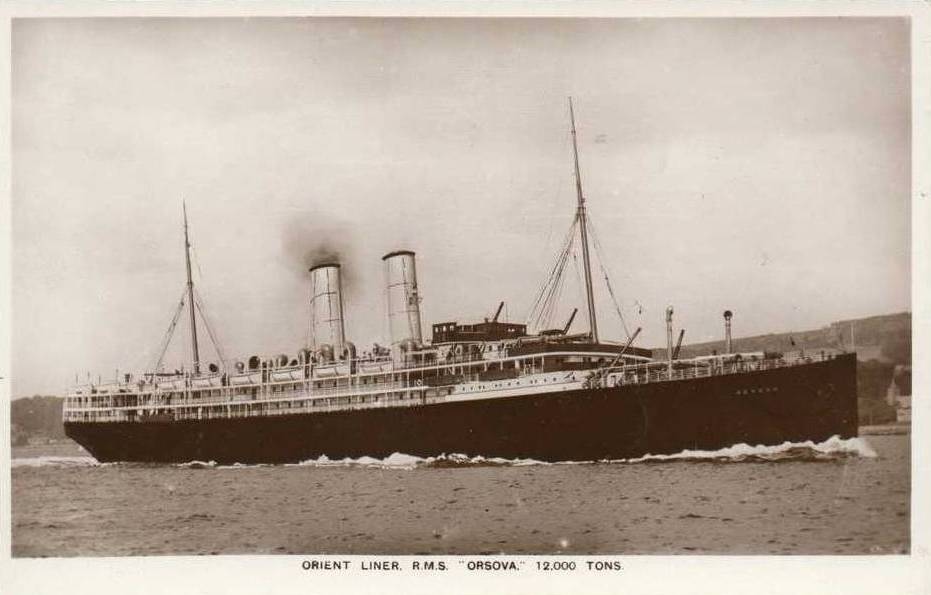
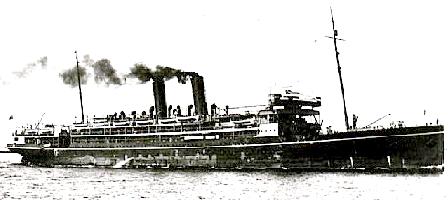 Mr. D. H.
Lawrence, the distinguished English novelist, who has been on a short
visit to Western Australia, left, by the Malwa on
Thursday for Sydney, accompanied by Mrs Lawrence. Mr. Lawrence has a very
attractive and interesting personality. He is a brilliant conversationalist, and
at the same time is extremely, modest, disliking limelight and publicity. He is
only 36 years of age, and is considered by the London critics to be one of the
coming men in the world of literature. Mrs. Lawrence, who was impressed with the
beauty of the Park and the fascination of the bush, is a foreigner.
Mainly About People. (1922, May 22; MONDAY). The Daily
News (Perth, WA : 1882 - 1950), p. 6 Edition: THIRD EDITION. Retrieved from
http://nla.gov.au/nla.news-article82496302
Mr. D. H.
Lawrence, the distinguished English novelist, who has been on a short
visit to Western Australia, left, by the Malwa on
Thursday for Sydney, accompanied by Mrs Lawrence. Mr. Lawrence has a very
attractive and interesting personality. He is a brilliant conversationalist, and
at the same time is extremely, modest, disliking limelight and publicity. He is
only 36 years of age, and is considered by the London critics to be one of the
coming men in the world of literature. Mrs. Lawrence, who was impressed with the
beauty of the Park and the fascination of the bush, is a foreigner.
Mainly About People. (1922, May 22; MONDAY). The Daily
News (Perth, WA : 1882 - 1950), p. 6 Edition: THIRD EDITION. Retrieved from
http://nla.gov.au/nla.news-article82496302
By the beginning of 1922 D H Lawrence was on the way to Australia. In Western Australia he met Molly Skinner, with whom he collaborated in a novel, "The Boy in the Bush," and experienced his first ecstasy at the sight of great distances, walked at night "under the huge electric moon," felt "the hair on his scalp stir" and "went icy cold with terror." In New South Wales he took a train south from Sydney and settled down in a bungalow at (of all places) the town of Thirroul. He had come thirteen thousand miles to recuperate his mental and physical resources in an Australian coalfield! He met nobody, but that did not stop him from loving the country and loathing the people. "This is the most democratic place I have ever been in," he wrote. "And the more I see of democracy the more I dislike it. It just brings everything down to the mere vulgar level of wages and prices, electric light and water-closets and nothing else . . . Yet the weird, unawakened -country is wonderful and, if you could have a dozen people perhaps, and a big piece of land of one's own ..."
BUT when the first batch of letters arrived from home he was filled with hatred: "He wished that every mail-boat would go down that was bringing any letter to him, that a flood would rise and cover Europe entirely, that he could have a little operation performed that would re-move from him for ever his memory of Europe and every thing in it." In spite of this he cut short his stay in Australia and eventually went back to his Europe to die, at a sanatorium near Cannes. And, before his death, the old friends came rallying round once more, bringing him fruit and hyacinths and cyclamens. H. G. Wells, the Aga Khan and many others came to visit him. And at the end the devoted Frieda sat by his bed and comforted him as he took his departure. SOMETHING PERSONAL A Genius But... (1950, June 17). The Sydney Morning Herald (NSW : 1842 - 1954), p. 12. Retrieved from http://nla.gov.au/nla.news-article18165893
DEATH OF MR. D. H. LAWRENCE. (Australian Press Association) LONDON, March 3 The death is announced of Mr. David Herbert Lawrence, the well known novelist. The late Mr. Lawrence was born at Eastwood, Nottingham,-on September 11, 1885, and was educated at Nottingham High School and Nottingham University. His publications include:-Novels: "The White Peacock," "Sons and Lovers," "The Rainbow," "Women in Love," "Aaron's Rod," "The Lost Girl," "Kangaroo," 1923;"St. Mawr," 1025; "The Plumed Serpent," 1926. He also wrote short stories, dramas, and essays. DEATH OF MR. D. H. LAWRENCE. (1930, March 5). The Brisbane Courier (Qld. : 1864 - 1933), p. 19. Retrieved from http://nla.gov.au/nla.news-article21502304
Extra threads collected and collated by A J Guesdon, 2012.
|
|